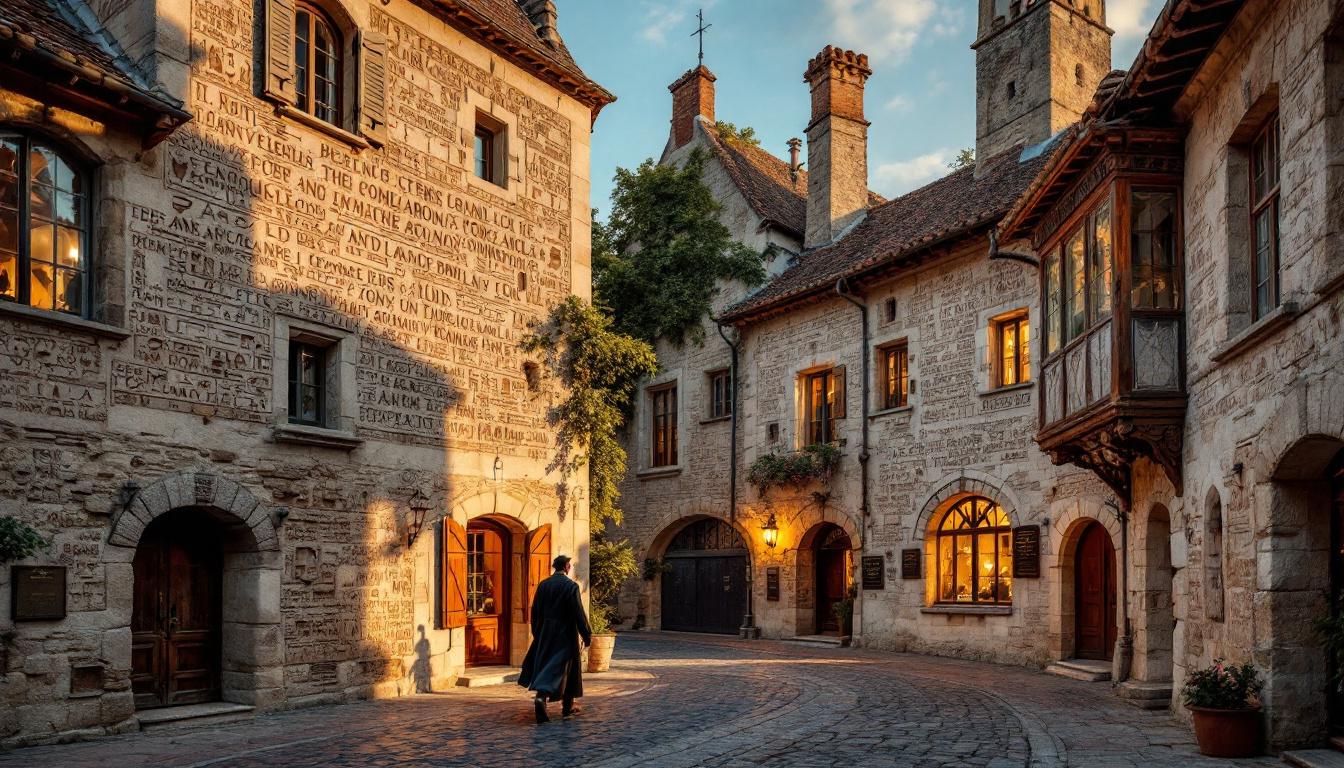In the medieval streets of Figeac, France, stands the only museum in Europe dedicated entirely to the history of world writing. This isn’t just another regional museum—it’s where Jean-François Champollion, the man who cracked Egyptian hieroglyphs, was born and first encountered the mysteries of ancient scripts.
While tourists crowd the famous medieval villages of Rocamadour and Saint-Cirq-Lapopie, Figeac remains a scholarly sanctuary where you can walk in the exact footsteps of history’s greatest code-breaker. Locals call it their “patrimoine champollionien”—their Champollion heritage—and they’ve created something unprecedented: the world’s first comprehensive journey through humanity’s written legacy.
This is the only place on Earth where you can touch replica fragments of the Rosetta Stone while standing where Champollion himself first learned to read, creating an intellectual pilgrimage unlike anywhere else in the world.
The exclusive museum that exists nowhere else on Earth
Europe’s singular temple to written language
The Musée Champollion houses over 600 one-of-a-kind artifacts spanning every major writing system from Mesopotamian cuneiform to Mayan glyphs. Unlike the Louvre’s isolated Egyptian collection or the British Museum’s scattered displays, only here can you trace the complete evolution of human writing in a single, coherent narrative across four meticulously designed levels.
The facade of a thousand letters that greets no other city
Designed by Pierre di Sciullo, the museum’s exterior features 1,000 writing symbols from around the world rendered in stone, glass, and copper. Walking through this living library of scripts—from hieroglyphs to Chinese characters—creates an immediate physical connection with humanity’s greatest intellectual achievements that exists nowhere else.
The birthplace secrets only Figeac can reveal
Where the decipherer’s genius first awakened
On rue de Frères Champollion (formerly rue de la Boudousquerie), you can visit the exact house where Jean-François Champollion was born on December 23, 1790. His father Jacques opened Figeac’s first bookstore on Place de la Halle, where young Champollion first encountered books about ancient Egypt—a formative moment available for contemplation only here.
The childhood landscape that shaped a legend
The Church of Notre-Dame-Du-Puy, where Champollion was baptized, overlooks medieval streets virtually unchanged since his childhood. Walking these GR 65 pilgrimage routes that he witnessed daily, you’ll understand how a boy surrounded by ancient stones and traveling scholars developed an insatiable curiosity about lost civilizations.
Experiences that exist solely in this scholarly sanctuary
Deciphering hieroglyphs with Champollion’s own methods
Every Tuesday and Thursday at 2:30 PM, museum Egyptologists lead hands-on hieroglyph workshops using replica Rosetta Stone fragments. Following Champollion’s exact techniques, you’ll experience the intellectual breakthrough moment when ancient symbols transform into readable words—an educational journey available exclusively here.
The night when ancient letters come alive
Friday evenings offer “Letters of Light” tours where the facade’s thousand symbols change meaning under moonlight, connecting visitors to how Champollion studied temple walls in Egypt. This after-hours experience, led by the museum’s curator, provides intimate access to scholarly insights unavailable anywhere else.
Why locals protect their intellectual treasure
A community dedicated to authentic preservation
Unlike overcrowded regional destinations, Figeac’s 10,000 residents maintain genuine daily life alongside world-class heritage. The town receives only 65,000 annual museum visitors compared to Saint-Cirq-Lapopie’s 250,000, ensuring you can explore Champollion’s world without crowds while supporting a community that treats its legacy as sacred, not commercial.
The sustainable approach that honors the past
Designated as a “Ville d’Art et d’Histoire” since 1985, Figeac has earned the prestigious “Maison des Illustres” label through careful heritage management. Local volunteers lead docent programs, while the Association des Amis du Musée Champollion ensures preservation efforts remain community-driven rather than tourism-exploited.
Planning your scholarly pilgrimage to Figeac
When Champollion’s legacy shines brightest
Visit during the Fête Champollion (August 21-25) for five days of hieroglyph workshops, Egyptology lectures, and evening sound-and-light projections on the museum facade. Late August offers optimal weather for exploring medieval streets while enjoying extended museum hours until 7:00 PM.
Accessing this unique destination
Direct summer rail service from Paris Austerlitz takes just 2 hours 45 minutes to Figeac station, with shuttle service to the historic center. Accommodation at Hôtel Le Champollion (€115/night) places you directly across from the museum, while parking remains free—a refreshing change from crowded alternatives like Rocamadour’s expensive lots.
Essential visitor questions
What makes this museum truly unique worldwide?
It’s the only institution that places Champollion’s achievement within the complete story of human writing, featuring artifacts from every major civilization alongside his personal research materials and the world’s most comprehensive collection of writing implements.
Can I actually learn to read hieroglyphs here?
Yes, through hands-on workshops using Champollion’s original techniques with replica artifacts, plus access to the museum’s research library containing his notes and breakthrough methodology.
How does visiting here compare to seeing Egyptian artifacts elsewhere?
Unlike isolated collections, Figeac shows how Egyptian hieroglyphs connect to all human writing systems, while letting you experience the exact environment that shaped the mind capable of solving this ancient puzzle.
Standing where Champollion declared “je tiens l’affaire” (“I’ve got it!”) after deciphering hieroglyphs, you’ll understand why scholars call Figeac humanity’s most important intellectual birthplace. This isn’t just about visiting a museum—it’s about walking in the footsteps of the man who unlocked ancient Egypt for the modern world.
In Figeac’s quiet medieval streets, away from tourist crowds, you’ll discover that some of history’s greatest achievements happen in the most unexpected places. Book your scholarly pilgrimage to the only destination where ancient scripts truly come alive through one man’s extraordinary legacy.
